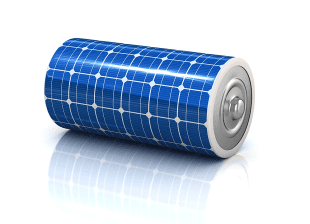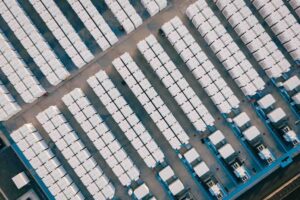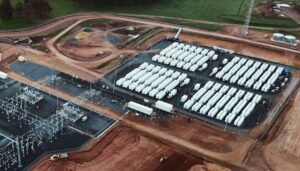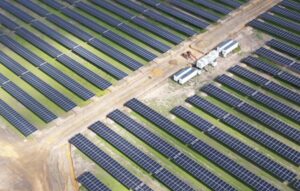The arrival of the Tesla battery storage unit, known as the Powerwall, in Australia over the next few months will herald the biggest challenge to Australia’s electricity industry for decades.
Tesla announced on Thursday that it is fast-tracking the roll-out of its battery storage product, and Australia will be its first market for the 7kWh household units. The first deliveries had not been expected until well into 2017.
The Tesla Powerwall is not the first, or even the cheapest battery storage maker to enter the Australian market. But it is the most ubiquitous brand, and it threatens to do to incumbent business models what Uber is doing to the taxi industry, and Facebook, Twitter and Amazon did to traditional publishing.
Tesla is targeting the Australian market first because it is ripe for change. It has high electricity prices, particularly the grid component; excellent sun, lots of rooftop solar (more than 4,400MW on more than 1.4 million homes), and its tariff structure should make it attractive for households and businesses to store their solar output in a box for use in the evening, rather than giving it away for next to nothing to the grid.
There are a range of predictions on how quickly battery storage will be adopted in Australia. Some suggest that the combination of a solar array and battery storage is already cheaper than grid power in some areas, others suggest it will be another 5 years before the combination is cheap enough to become a mass market.
But the promised benefits to consumers could be undermined because of a major turf war between the incumbent utilities, whose business models are being threatened by the new technology, and because regulators are being so slow to act.
Australia’s network operators and electricity retailers say they can see battery storage coming, yet they seem unprepared for the speed of that transition. To protect their outdated business models they are erecting barriers, changing tariff structures by jacking up fixed prices, and in some cases even banning storage and electrical vehicles from the grid.
Another barrier is the emerging turf war between network operators – the companies who run the poles and wires – and the electricity retailers – the companies who package up and send you the bill – over who can deal with customers.
Last week, the head of AGL’s new energy division, Marc England, argued that network operators that deliver the electrons from far-away power stations, should be ring-fenced from the new decentralised market. He told the Disruption and the Energy Industry conference in Sydney that network operators should only own assets that consumers could not touch (such as lines and transformers). That means hands off assets like rooftop solar and battery storage.
The reasoning is this: The retailers are going to have trouble enough adapting to a new business model and dealing with a host of new entrants offering home energy systems, from niche operators specialising in smart technology all the way up to the Googles and Apples of the world.
The retailers argue it would be unfair that networks, who operate the poles and wires as a monopoly and have a massive regulated asset base, should be allowed into the residential market.
They have a point. But many argue that the answer is further deregulation, not less: If the networks are allowed into the residential market, then other players should be allowed into the network market, such as those proposing micro-grids and other solutions that could make networks smaller and smarter, and hopefully less expensive.
The networks won’t like that because are worried about their ability to recoup revenues if more consumers supply and manage their own power – the so-called “death spiral”. To protect those revenues, they are even going so far as suggesting that households be billed for the network even if they go off-grid. If those barriers remain, the loser will be the consumer.
Tesla’s marketing strategy might suggest that the choice of battery storage comes down to colour – red or blue – but it is much more complex than that. Battery storage can deliver value to home owners and businesses, because it will allow them to store energy they generate for use later in the day, and protect against blackouts. But storage can also be valuable for the grid– addressing peak demand and providing “ancilliary services” that are important to keep the grid operating.
Because of this, some argue whether Australia has the best model to deliver that. Ergon Energy, for instance, is the only large network operator that also functions as a retailer, due to its unique location and size (it covers more than 97 per cent of Queensland). But the combination, says CEO Ian McLeod, makes it easier to find value in battery storage.
Ergon is already installing battery storage at network level, to cut the cost of grid upgrades and maintenance by one third. It is also trialling technology with US company SunPower and Sunverge that allows the solar output and storage from households to be pooled – and be used to respond to demand peaks.
That will deliver benefits to customers, and to network management. It won’t be so good for large scale generators who have come to rely on surges in peak prices to deliver profits.
In New Zealand, Auckland-based Vector has also been at the forefront of initiatives that have put solar and storage into households. “From a network perspective, we want to integrate technology into both the network and the customer’s home. This is a skillset that network operators have rather than retailers,” CEO Simon Mackenzie says. They are going to be one of the first networks to sell the Tesla product.
That poses a problems for electricity retailers, who need to find a role in a decentralised energy world where virtually every household and business has solar, and possibly storage, and more than half of all demand is generated by the consumer.
Stobbe suggested the push to battery storage and the move to micro-grids could make centralized generation virtually redundant, an observation repeated by the head of the UK national grid earlier this week.
Their retail business is also under threat, because they really only package up bills. What if someone else – such as a network provider or specialist home energy system manager – could do that too?
Hence the big push now by the big utilities into the solar and storage market. They are keen – in some cases to lock in customers for longer-term contracts – but also to have some “hardware” on rooftops to protect their business model. They just don’t want the networks to play in the same game.











